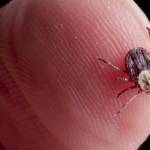New Research on Lyme Disease in Horses

Many horse owners throughout the world debate the importance of Lyme disease in horses. Is Lyme disease a real affliction causing unusual lameness, poor performance, low-grade fever, and behavior changes, or is it a convenient catch-all diagnosis when there’s no clear cause of nebulous clinical signs?
According to experts, Lyme disease should be considered a real and valid cause for concern, especially considering that ecological changes mean that ticks capable of transmitting Lyme disease, which is caused by the bacterium Borrelia burgdorferi, are appearing in new geographical areas. Further, international travel could result in the introduction of infected ticks to areas previously void of these vectors.
Reports in both horses and humans indicate that Lyme disease is spreading. In addition to 13-45% of horses in the northeastern United States that test positive for Lyme disease, studies show 48% of horses in some areas of France and 7-24% of horses in Italy also test positive.
Historically, Virginia has not been considered a tick hotspot like New York, Pennsylvania, and other states in the northeast. However, one study* recently confirmed that Lyme disease affects a substantial number of horses in Virginia, with 83 of 250 tested horses (33%) positive for Lyme. Those values were similar to numbers reported in the northeastern United States.
According to the study, knowing where Lyme disease is a threat to horses will help equine practitioners “make better diagnostic and therapeutic decisions.”
The best way to protect horses against Lyme disease is to prevent black-legged deer ticks from attaching to your horse. Steer clear of tick-infested areas, conduct thorough tick checks daily, and discuss possible preventive protocols with your veterinarian.
“Affected horses showing clinical signs of Lyme disease, a condition that affects multiple body systems, could benefit from supplementation with Nano•E for its antioxidant action; an omega-3 fatty acid like EO•3 for its immune-boosting properties; a joint supplement to help swollen, tender joints; and potentially a probiotic supplement if the horse is on antibiotics to support the microbial population in the hindgut,” recommended Kathleen Crandell, Ph.D., an equine nutritionist with Kentucky Equine Research.
Horse owners in the United States can utilize Synovate HA and KER•Flex for joint support, while those in Australia should look to Glucos-A-Flex.
*Funk, R.A., R.S. Pleasant, S.G. Witonsky, et al. Seroprevalence of Borrelia burgdorferi in horses presented for Coggins testing in southwest Virginia and change in positive test results approximately 1 year later. Journal of Veterinary Internal Medicine. In press.








